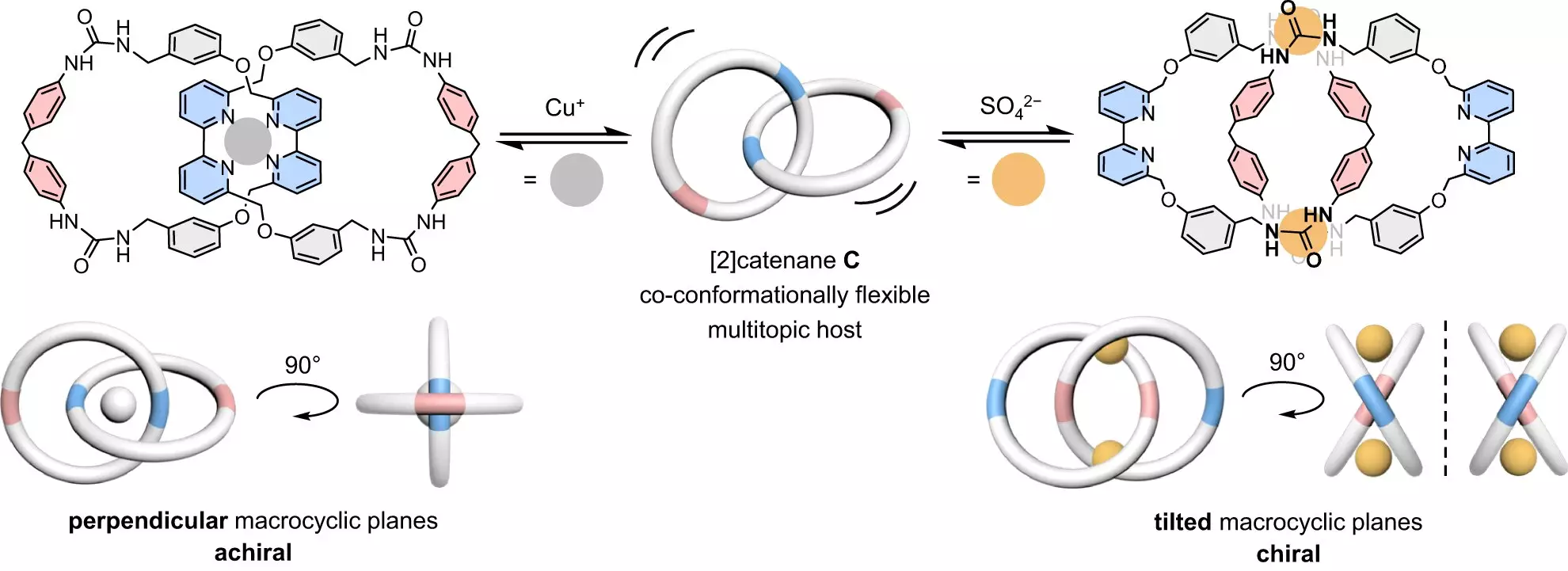At first glance, the intricate mechanics behind simple items like metal chains, handcuffs, and key rings can easily be overlooked. Yet, these objects encapsulate a fascinating principle: the interlocking of rigid rings creates a dynamic system that marries flexibility with robust strength. This unique structural dance enables the objects to perform their intended functions efficiently. Similarly, in the microscopic world, interlocked molecular structures known as catenanes are emerging as a powerful tool for scientific exploration and innovation. These structures harbor the potential to revolutionize molecular switches and machines, yet the world of catenanes remains shrouded in challenges, primarily due to the difficulties in their synthesis.
A Breakthrough in Catenane Synthesis
Under the guidance of Professor Ho Yu Au-Yeung at The University of Hong Kong (HKU), a team of researchers has made significant strides in the synthesis of catenanes. Their recent work has led to the successful creation of a unique catenane design featuring two freely rotating macrocycles. What sets this catenane apart is its exceptional ability to bind selectively and strongly to distinct ions: specifically, the copper(I) cation and the sulfate anion. This ability to identify and attach to both a positively and negatively charged ion opens doors to exciting applications in fields ranging from environmental monitoring to medical diagnostics.
Catenanes achieve this remarkable feat despite the intrinsic challenges posed by the electrostatic repulsion that arises when trying to accommodate ions of opposite charges. Traditional binding sites, designed to attract cations, face a significant obstacle in also attracting anions, and vice versa, owing to the law of charged particles. The innovative twist introduced by Professor Au-Yeung’s team involved integrating binding sites for both types of ions onto the very rings of the catenane. This design allows for rotatory motions that can adaptively position binding sites, akin to a chameleon seamlessly altering its hue to align with its environment.
Significance Beyond the Laboratory
The implications of this research extend far beyond a mere academic achievement. Copper(I) and sulfate ions are not only pivotal in various industrial applications, but they also play critical roles in biological systems. Essential for cell growth and organism development, these elements’ selective extraction from environmental samples can contribute significantly to sustainable practices and recycling programs. Imagine the potential for catenanes in enhancing extraction techniques, providing a vital lifeline to industries grappling with the challenges of resource depletion and environmental sustainability.
Moreover, in the realm of healthcare, the utility of sophisticated molecular receptors capable of selectively identifying and binding various ions and minerals could herald a new era of diagnostic tools. Just as current practices measure essential electrolytes like sodium and chloride in blood samples to monitor health, these novel catenanes could offer precise detection mechanisms for a broader array of ions, paving the way for more refined medical diagnostics.
The Future of Catenane Research
Looking ahead, Professor Au-Yeung’s vision for developing even more advanced catenane structures reflects a commitment to pushing the boundaries of molecular science. The prospect of creating catenanes capable of simultaneously binding multiple cations, anions, and ion pairs suggests an exciting trajectory for future exploration. This multifaceted approach could vastly expand the functional applications of catenanes, potentially leading to developments in medical therapies, environmental sensing devices, and even nanotechnology.
The unique architecture of catenanes not only demonstrates their inherent versatility but also challenges us to rethink how we perceive molecular interactions. As researchers like Professor Au-Yeung continue to unravel the complexities of these structures, we stand on the brink of unlocking new pathways in science and technology that may fundamentally alter our engagement with the world around us.
In an era where innovative solutions are paramount, the development of catenanes signifies a crucial leap forward. The flexibility and adaptability of these molecular machines could lead to breakthroughs that redefine our technological landscape, prompting a wider embrace of the wonders of structural chemistry and its potential applications.

